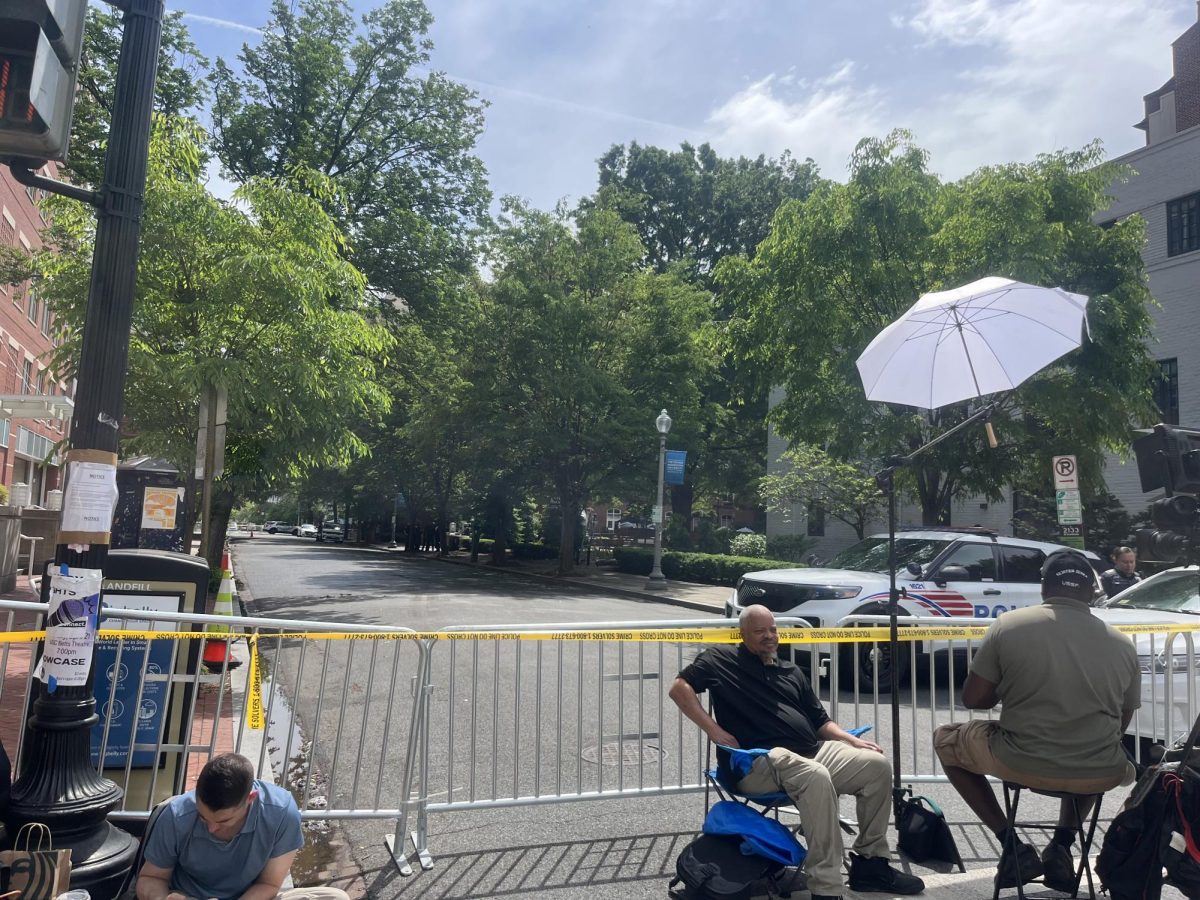
Throughout the campaign season for this year’s Georgetown University Student Association executive election, the four tickets have focused not only on their policies, but also the rules and processes of the race.
In today’s election, the ballots will offer voters the opportunity to rank candidates by order of preference. Unlike the United States’ electoral college voting process, the single transferable voting used by GUSA allows for a form of an instantaneous runoff election.
If no ticket initially wins an absolute majority of first-choice votes, the ticket with the fewest first-choice votes is eliminated and has its votes redistributed according to the second-choices indicated on those ballots. Through this process, the instant runoff election continues until one ticket has the support of 50 percent of all voters. In general, few tickets earn a majority in the first round and most GUSA elections last until the second or third round.
Voters will rank their choices between the tickets of Norman Francis Jr. (COL ’20) and Aleida Olvera (COL ’20); Nicki Gray (NHS ’20); Sina Nemazi (COL ’21) and Roya Wolfe (SFS ’21); and Ryan Zuccala (MSB ’20) and John Dolan (MSB ’20).
The STV election system, intended to ensure wide support for a victorious ticket and improve efficiency, may also have implications for the strategies of tickets and their campaigns. This year’s candidates shared their opinions about how GUSA’s election rules affect campaigning and the possibility of cross-endorsements between tickets in interviews with The Hoya.
In the 2017 executive election, the ticket of Kamar Mack (COL ’19) and Jessica Andino (COL ’18) won after a cross-endorsement with the pair of John Matthews (COL ’18) and Nick Matz (COL ’18).
While none of the current candidates expressed an intent to cross-endorse, several noted various grievances with the voting process and GUSA’s election culture, such as the pressure to focus on a laundry list of policy issues.
Reforming Representation
GUSA uses STV rules to strike a balance between an expedient election and ensuring that winning tickets achieve broad support, according to GUSA Election Commission Co-Chair Grant Castle (SFS ’21).
Along with improving efficiency, STV may also stimulate voter engagement, according to professor Roger Lagunoff, an economist specializing in voting processes.
“If anything, STV should encourage participation,” Lagunoff said. “That was one of its virtues when it was implemented in many jurisdictions — in, for instance, school board election.”
GUSA adopted a ranked-choice voting system in 2006, according to former GUSA historian Ari Goldstein (COL ’18). The reform replaced a plurality-based election system, where the candidate who earns the most votes wins even without a majority. The reform was partly in response to the fact that no ticket received an outright majority of votes for several consecutive years leading up to 2006.
The 2006 GUSA reforms also shifted the representation of the GUSA senate from a system of representatives for each class to representation by residential areas. That reform was overturned in February 2018 after failing to improve voter turnout, according to current GUSA historian Henry Westerman (SFS ’21).
“This move was made in an effort to boost voter turnout, but as you may remember [it] was overturned in a recent referendum after it failed in its stated goals of boosting participation and promoting personal representation for different areas of campus,” Westerman wrote in an email to The Hoya.”
Platform Pressures
The implementation of STV, however, also puts pressure on campaigns to create a platform that can appeal to everyone rather than targeting specific constituents.
“Centralization. That’s the flip side of polarization, isn’t it?” Lagunoff said. “Either you have candidates who are taking extreme positions or you have candidates who are moderating their positions. If you have candidates moderating their positions, they start to look alike.”
With their narrow policy platform focused exclusively on three issues, Zuccala and Dolan see themselves as different from the other executive tickets. Ranked choice voting may disadvantage unorthodox tickets, as voters may reserve their top ranks for platforms that have more in common, according to Zuccala.
“That voter ranking you have to do obviously makes it difficult if you’re so far different from everybody else,” Zuccula said. “You’re not going to be able to get other people’s votes.”
Before his current presidential run, Nemazi worked on the campaign of Josh Sirois (SFS ’20) and Casey Doherty (COL ’20) in the 2018 GUSA executive election. He argued that single transferable vote is an ineffective mechanism because it encourages votes toward unorthodox or “joke” tickets that may affect the outcome, citing the 2018 election as an example.
In that election, Sirois and Doherty carried the most votes in the first round out of all four tickets in the field, including a satirical ticket. Sirois and Doherty lost in the third round to Sahil Nair (SFS ’19) and Naba Rahman (SFS ’19) after the bottom two tickets were eliminated and their votes redistributed by rankings.
“People voted for Batman as a joke, and then those votes went to Sahil and Naba,” Nemazi said. “It’s tricky, because if these people were voting for the purpose of making campaign better and improving it, then Josh and Casey seemed to have the support.”
Gray, running as a solo presidential candidate, indicated that other factors, including a general lack of understanding about GUSA’s role, have forced candidates to take a stance on all campus issues, regardless of their relevance.
“I think that, far more than rules, precedent and a lack of understanding on the part of the student body (through no fault of their own) has forced executive campaigns to form and state opinions on almost every single campus issue,” Gray wrote in an email to The Hoya.
Nemazi agreed with the idea that campaigns were pressured to focus on a similar, broad range of issues.
Regardless of the campaigns’ similar policies, however, there is still room for candidates to separate themselves from the pack, according to Francis.
“I would say that folks could definitely distinguish themselves based off of the thoroughness of their research and reaching out to groups themselves and how they would enact those policies,” Francis said.
In their run for the GUSA executive, Francis and Olvera believe their proposed policies reflect their convictions.
“I don’t believe that we have moved too far to the middle ground from where a lot of our beliefs and policies lie,” Olvera said. “We’ve made sure to stay straight with what we believe in and not try to compromise too many of our beliefs.”
Considering Cross-Endorsements
In recent years, GUSA elections have been decided on tight margins. Last year’s presidential election saw voter turnout of 39 percent, marking the win of Nair and Rahman by a margin of 36 votes. The 2017 presidential election led Mack and Andino to win with an even tighter margin of just 34 votes.
In the past, candidates have attempted “cross-endorsing” each other, or giving recommended second choices for the ranked ballot. This year, however, no candidates have declared their intentions to cross-endorse.
While not signaling an intention to give a cross-endorsement, Nemazi emphasized dialogue between the campaigns as of Feb. 1.
“At this stage, no, we don’t have any endorsements of other campaigns,” Nemazi said. “But, I will say that I’ve spoken with a lot of the other candidates to just talk about policy. At the end of the day we’re all running to try and make campus better.”
Francis and Olvera also expressed the importance of communication and cooperation across campaigns, though both felt unprepared to cross-endorse any of their competitors as of Feb. 2.
Zuccula said other tickets would need to convince him and Dolan of the similarity of their platforms to earn a cross-endorsement.
“If someone came to us and made a valid argument as to why we should tell our voters to vote for them second, and maybe they incorporate part of our platform into their platform and make promises about how they will make sure things get done, maybe.” Zuccula said.
“But we haven’t had that kind of conversation yet and we’re not ready to make that kind of decision.”
Gray did not indicate whether she would cross-endorse another ticket and instead highlighted the experience she has gained by interacting with other tickets throughout the campaign.
“The time that I have spent in campaign-mode thus far has been so rewarding as has allowed me to meet and learn about various issues from so many people with whom I’d have been unlikely to come into contact or get-to-know otherwise,” Gray wrote.
Correction: This article previously stated that GUSA historian Henry Westerman is in the SFS class of 2022; Westerman is in the class of 2021.



















